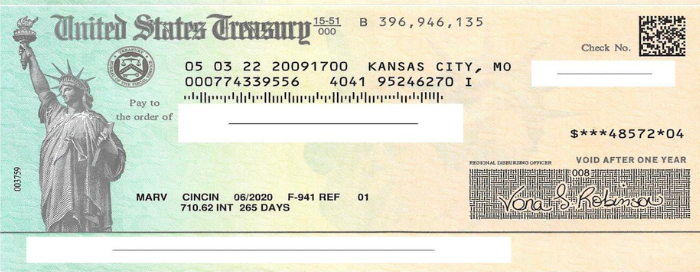How to Sign Out From Microsoft Account in Windows 11
Are you struggling to sign out from your Microsoft account in Windows 11? Don’t worry, you’re not alone. Many users have difficulty with navigating the new Windows 11 interface to find the account sign out option. But fear not, signing out of your Microsoft account in Windows 11 is actually quite simple. In this guide, we will walk you through the step-by-step process of signing out of your Microsoft account in Windows 11, and explain the benefits of doing so. So, let’s get started!
How to Sign Out From Microsoft Account in Windows 11
- Open the Settings app and go to Accounts
- Select the option to ‘Sign out and finish’
- Select the ‘Sign out’ button
- The Microsoft account will now be signed out
Sign Out from Microsoft Account in Windows 11
Windows 11 is a powerful operating system with many features. One of these features is the ability to sign in to a Microsoft account. This allows you to access a variety of services including the Microsoft Store, Microsoft Office, and other Microsoft products. However, if you no longer wish to use a Microsoft account, you can sign out from it in Windows 11.
Sign Out of Microsoft Account in Windows 11 Settings App
The easiest way to sign out of a Microsoft account in Windows 11 is to use the Settings app. Open the Settings app by pressing the Windows key + I. Once the Settings app is open, select Accounts from the main window. In the Account section, select the “Sign in with a Microsoft account instead” option. This will open a page where you can sign out of your Microsoft account.
Once you have signed out of your Microsoft account, you will need to sign in with a local account. To do this, select the “Sign in with a local account instead” option. You will then need to enter a username and password for the local account. Once you have done this, your local account will be set up and you will be able to sign in to Windows 11 without using a Microsoft account.
Sign Out of Microsoft Account in Control Panel
Another way to sign out of a Microsoft account in Windows 11 is to use the Control Panel. Open the Control Panel by pressing the Windows key + X and then selecting the Control Panel option. Once the Control Panel is open, select the User Accounts option. On the User Accounts page, select the “Change your account type” option. This will open a page where you can sign out of your Microsoft account.
Once you have signed out of your Microsoft account, you will need to sign in with a local account. To do this, select the “Sign in with a local account instead” option. You will then need to enter a username and password for the local account. Once you have done this, your local account will be set up and you will be able to sign in to Windows 11 without using a Microsoft account.
Sign Out of Microsoft Account in Command Prompt
The last way to sign out of a Microsoft account in Windows 11 is to use the Command Prompt. Open the Command Prompt by pressing the Windows key + X and then selecting the Command Prompt option. Once the Command Prompt is open, type the following command: net user username /delete. This will delete the user account associated with the Microsoft account.
Deleting User Files
Once the user account has been deleted, you will need to delete the user’s files from the computer. To do this, open File Explorer and navigate to the user’s folder. Select all the files in the folder and then delete them.
Deleting Microsoft Account
Once the user files have been deleted, you will need to delete the Microsoft account itself. To do this, open the Settings app and select Accounts from the main window. Select the “Manage my Microsoft account” option and then sign in with your Microsoft account. Once you are signed in, select the “Delete my Microsoft account” option. This will delete the Microsoft account associated with the user.
Few Frequently Asked Questions
Q1. What Is Microsoft Account?
A Microsoft Account is an account users can create to access various Microsoft products and services. It is used to sign in to Windows 11, Xbox, Outlook.com, OneDrive, Skype, and other Microsoft products and services. The account gives users access to personalized settings, such as their desktop background, language preferences, and more.
Q2. How To Sign Out From Microsoft Account In Windows 11?
In Windows 11, you can sign out from your Microsoft Account by going to the Start menu and clicking on your user profile icon. This will bring up a menu which includes an option to “Sign out”. Click this and your Microsoft Account will be signed out.
Q3. What Happens When I Sign Out Of Microsoft Account?
When you sign out of your Microsoft Account, you will no longer have access to the personalized settings that were saved to your account, such as your desktop background, language preferences, and more. You will also be logged out of any Microsoft products or services that you were signed in to.
Q4. Can I Sign Out From Microsoft Account Without Signing Out Of Windows 11?
Yes, you can sign out from your Microsoft Account without signing out of Windows 11. You can do this by going to the Start menu, clicking on your user profile icon, and selecting the “Sign out” option. This will sign you out of your Microsoft Account without signing you out of Windows 11.
Q5. What Is The Difference Between Signing Out Of Microsoft Account And Signing Out Of Windows 11?
The difference between signing out of your Microsoft Account and signing out of Windows 11 is that signing out of your Microsoft Account will sign you out of any Microsoft products or services that you were signed in to, such as Outlook.com, OneDrive, Skype, etc. Signing out of Windows 11, however, will sign you out of the entire operating system.
Q6. Is It Necessary To Sign Out From Microsoft Account?
It is not necessary to sign out from your Microsoft Account, but it is recommended, especially if you are sharing your computer with others. Signing out of your account ensures that your personal settings, such as your desktop background, language preferences, and more, are not accessible to anyone else. Additionally, signing out of your account prevents anyone else from accessing your Microsoft products or services.
How To Sign Out Microsoft Account in Windows 11 | Remove Microsoft Account From Windows 11
In conclusion, signing out from a Microsoft account in Windows 11 is an easy task to do. Following the steps provided in this article will help you to sign out from your Microsoft account in no time. Remember to always keep your system secure by signing out from your Microsoft account when you are finished using it. Doing so will help protect your personal information and data stored on your computer.




